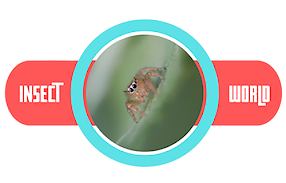Seed dispersal insects play a vital role in the ecological process of dispersing seeds from parent plants to new locations. This process contributes to the distribution, colonization, and survival of plant species. Here are some examples of seed dispersal insects along with their characteristics:
Ants (Myrmecochory):
Description: Ants are well-known for their role in seed dispersal through a process called myrmecochory. Plants that use this strategy often have seeds with elaiosomes, which are nutrient-rich appendages.
Behavior: Ants collect seeds with elaiosomes, carry them to their nests, and consume the elaiosomes. The remaining seed is discarded in nutrient-rich ant mounds or scattered in surrounding areas, promoting seed germination and plant growth.
Ants (Myrmecochory):
Description: Ants are well-known for their role in seed dispersal through a process called myrmecochory. Plants that use this strategy often have seeds with elaiosomes, which are nutrient-rich appendages.
Behavior: Ants collect seeds with elaiosomes, carry them to their nests, and consume the elaiosomes. The remaining seed is discarded in nutrient-rich ant mounds or scattered in surrounding areas, promoting seed germination and plant growth.
Beetles:
Description: Certain beetles are involved in seed dispersal, primarily by consuming seeds and then excreting them in different locations.
Behavior: Beetles may be attracted to seeds for their nutritional content. After feeding on the seeds, they can transport and deposit them in new locations through their activities, contributing to seed dispersal.
Description: Certain beetles are involved in seed dispersal, primarily by consuming seeds and then excreting them in different locations.
Behavior: Beetles may be attracted to seeds for their nutritional content. After feeding on the seeds, they can transport and deposit them in new locations through their activities, contributing to seed dispersal.
Wasps:
Description: Some wasps play a role in seed dispersal, particularly those that feed on fruits or nectar.
Behavior: Wasps may collect seeds while foraging for food. As they move from one location to another, they inadvertently carry seeds with them, aiding in dispersal.
Description: Some wasps play a role in seed dispersal, particularly those that feed on fruits or nectar.
Behavior: Wasps may collect seeds while foraging for food. As they move from one location to another, they inadvertently carry seeds with them, aiding in dispersal.
Butterflies and Moths:
Description: Butterflies and moths can contribute to seed dispersal, especially when they are nectaring on flowers or feeding on fruits.
Behavior: Seeds may attach to the bodies of butterflies and moths as they visit flowers or feed on fruits. As these insects move to new locations, they can inadvertently deposit seeds, assisting in dispersal.
Description: Butterflies and moths can contribute to seed dispersal, especially when they are nectaring on flowers or feeding on fruits.
Behavior: Seeds may attach to the bodies of butterflies and moths as they visit flowers or feed on fruits. As these insects move to new locations, they can inadvertently deposit seeds, assisting in dispersal.
True Bugs (Hemiptera):
Description: Some true bugs, such as stink bugs, can be involved in seed dispersal.
Behavior: True bugs may feed on seeds, and the seeds can pass through their digestive systems. After ingestion, the bugs excrete the seeds in different locations, aiding in dispersal.
Description: Some true bugs, such as stink bugs, can be involved in seed dispersal.
Behavior: True bugs may feed on seeds, and the seeds can pass through their digestive systems. After ingestion, the bugs excrete the seeds in different locations, aiding in dispersal.
Bird-Dispersed Insects:
Description: Insects associated with birds, such as lice and mites, can indirectly contribute to seed dispersal by hitchhiking on birds.
Behavior: These insects may attach themselves to the feathers or bodies of birds. As the birds move from place to place, they can inadvertently transport seeds and associated insects, promoting seed dispersal.
Description: Insects associated with birds, such as lice and mites, can indirectly contribute to seed dispersal by hitchhiking on birds.
Behavior: These insects may attach themselves to the feathers or bodies of birds. As the birds move from place to place, they can inadvertently transport seeds and associated insects, promoting seed dispersal.
Seed dispersal by insects is a crucial ecological process that enhances plant diversity, colonization of new habitats, and the overall health of ecosystems. The relationships between plants and seed dispersal insects have evolved over time, resulting in various strategies that benefit both parties.


0 Comments